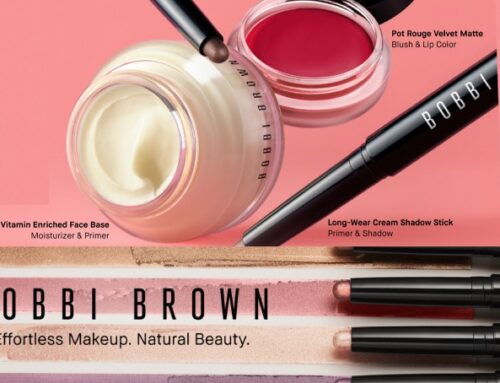This market is making investing in bonds more attractive than ever
May 31, 2025
They’re less risky than stocks, can offer steady income and deserve a spot in your portfolio

1941 war bond poster, showing a man holding a U.S. savings bond (Getty Images/Bettmann)
}
Bonds are essentially loans where investors lend money to a corporation, government or organization. In exchange, the borrower typically agrees to pay the investor a fixed interest rate over a set period of time.
When stock markets tank, investors tend to move their money into bonds since these investments are less risky and can help soften the blow to their portfolios. This is why historically, when equities lose value, bonds would hold their value or even rise in value.
In early April, though, that didn’t happen. Following President Trump’s announcement of sweeping tariffs, stocks and bonds sold off simultaneously. Although markets recovered somewhat after Trump’s 90-day pause on the tariffs, the recent fluctuations have left investors wondering if bonds still deserve a spot in their portfolios.
Should you invest in bonds?
Despite the bumpy start to the year, financial experts remain pretty optimistic about bonds.
“This might be one of the most compelling times since 2007 to invest in bonds,” said Pawan Jain, a certified financial planner and associate professor of finance, insurance and real estate at Virginia Commonwealth University. “After years of rising interest rates, yields are finally attractive across many bond types, and with the Federal Reserve expected to pause or begin cutting rates, investors could benefit from both steady income and potential price gains.”
David Johnston, managing partner of Amwell Ridge Wealth Management and a certified financial planner, said the overall outlook for yields is attractive. “Even if bond prices bounce around in the coming weeks, yields are still looking pretty solid compared to the last 20 years,” he said. That means there are some good chances to earn income across the bond market. “Plus, starting yields are now so much higher than even just a few years ago, and starting yields are usually the best indicator of future performance.”
Before diving into the risks of investing in bonds, it’s helpful to understand how bond prices and yields are connected. In short, bond prices and yields move in opposite directions. Generally, if you already own a bond, you want yields to fall because bond prices rise when yields drop, making your bond more valuable. But if you’re looking to buy a bond, you want yields to be high, so you lock in a better income stream at a lower price.
That said, bonds aren’t completely risk-free. Usually, the higher the yield a bond offers, the more risk you’re taking on. On the other hand, lower yields typically mean the bond is a safer investment.
Best types of bonds to invest in
If you’re thinking about adding bonds to your portfolio this year, experts say to consider the following:
Municipal bonds. These bonds are issued by state or local governments to fund public projects like roads or water systems. Marc Lichtenfeld, chief income strategist at The Oxford Club, believes that municipal bonds are solid options for higher earners or people living in high-tax states.
Municipal bonds are federally tax-free. And in some cases, they’re also free from state and local taxes. That means you may never owe income taxes on the payments you receive from the bond’s issuer. “Some municipal bonds are yielding about the same as Treasuries, but because of their tax-exempt status, their tax-equivalent yield can be over 7%,” said Lichtenfeld. “You’d have to earn more than 7% on a taxable bond just to match that.”
Short-duration corporate bonds. These bonds are another investment worth looking into. According to Johnston, these shorter maturities help protect against interest rate swings while still offering attractive yields.
With so much uncertainty around the U.S. tariffs, interest rates and broader geopolitical tensions, having flexibility is important. Short-term bonds make it simpler to adjust your portfolio if things change.
U.S. Treasuries. If you’re looking for safety, experts say U.S. Treasuries are still one of the best options. They offer strong liquidity and minimal credit risk, even though they briefly dipped alongside stocks during the latest sell-off.
What to consider before putting your money in bonds
Make sure you’re aware of a couple of things before adding bonds to your portfolio.
Don’t try to time the market. “Things are so unpredictable right now,” said Lichtenfeld. “It’s impossible to have any idea where things are headed. Buy bonds to protect your principal and generate income, not to guess where interest rates are going next.”
While many expect the Fed to pause or even cut rates, there’s always a chance rates could move unexpectedly, especially with global trade tensions heating up.
Keep bond maturities short. If you’re thinking about buying bonds now, Lichtenfeld suggests keeping your bond maturities shorter, around five years or less. “I wouldn’t want to own long-term bonds at this point,” Lichtenfeld said. He explained that shorter maturities offer more flexibility if interest rates change and can help protect against larger price drops.
Build a bond ladder for stability. If you want to reduce portfolio risk and earn a steady income, you may want to build a bond ladder. The idea is you buy a series of bonds that mature in consecutive calendar years, so you have bonds regularly coming due and the ability to reinvest at new rates over time.
Suppose you have $50,000 to invest in bonds. You could buy five different bonds, each with a face value of $10,000, and each would have a different maturity, ranging from one to five years or more. This is a good way to spread out risk, especially in an unpredictable environment.
Read more
about personal finance
By Jamela Adam
Jamela Adam is a freelance personal finance writer covering topics such as savings, investing and mortgages. Her work has been published in major publications, including Yahoo Finance, Forbes Advisor, Business Insider, CNN Underscored and Chime.
MORE FROM Jamela Adam
Search
RECENT PRESS RELEASES
Related Post




